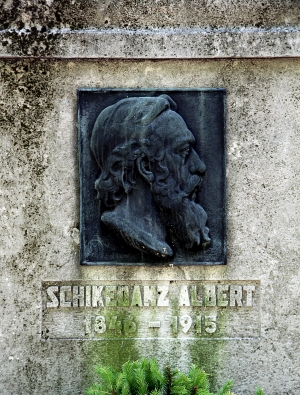Albert Schickedanz (1846–1915)
Gábor Zoboki’s Memorial Speech at Fiumei Cemetery

Photo: Institute of National Heritage, Zoltán Kapusi
The oeuvre of architect Albert Schickedanz coincides with one of the most flourishing eras of Budapest. Following the integration of the city in 1873 and the foundation of the Municipal Public Works Committee in 1870 magical energies worked miracles in this city for a few decades thanks to the contribution of such great creative talents as Imre Steindl, Frigyes Schulek, Miklós Ybl, Alajos Hauszmann, Samu Petz or the city-planner Ferenc Reitter. The two-centred city was born after the integration of Buda, Pest and Óbuda. The heart of the Pest side is Heroes’ Square with Andrássy Avenue which was designed to function as a pendant of the Royal Castle in Buda to be used as the main square of the civilian city. The three structures defining the view of the square – the Art Gallery (Kunsthalle Budapest), the Millennary Monument and the Museum of Fine Arts – were built one by one soon after each other. When standing to face them as a composition of three items, however, one can see how they create a beautiful equilibrium, which is actually a very rare example in Revivalist (Historicist) European architecture. Opened in 1906, the Museum of Fine Arts in Budapest may as well be rated as the earliest summary of previous experiences in this genre, the most mature design of the museum building typology and its most harmonious implementation.



